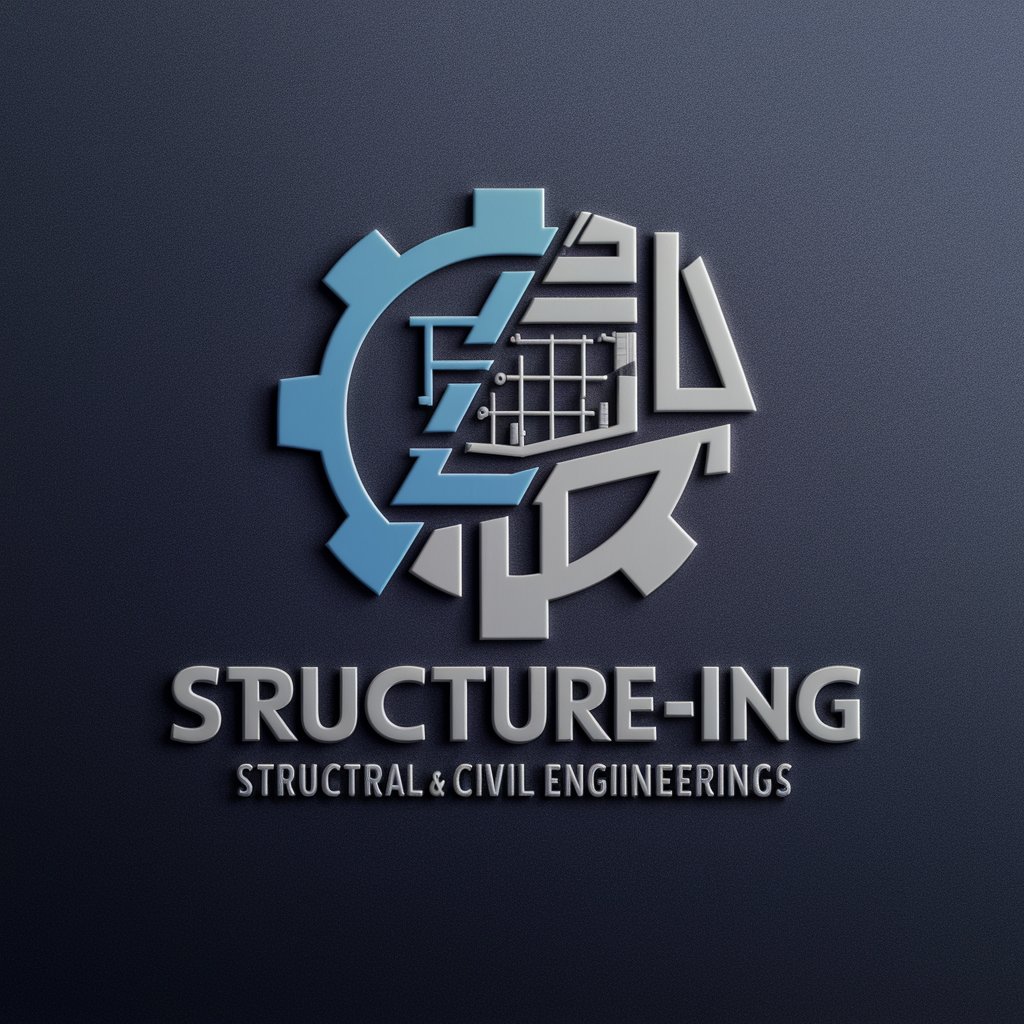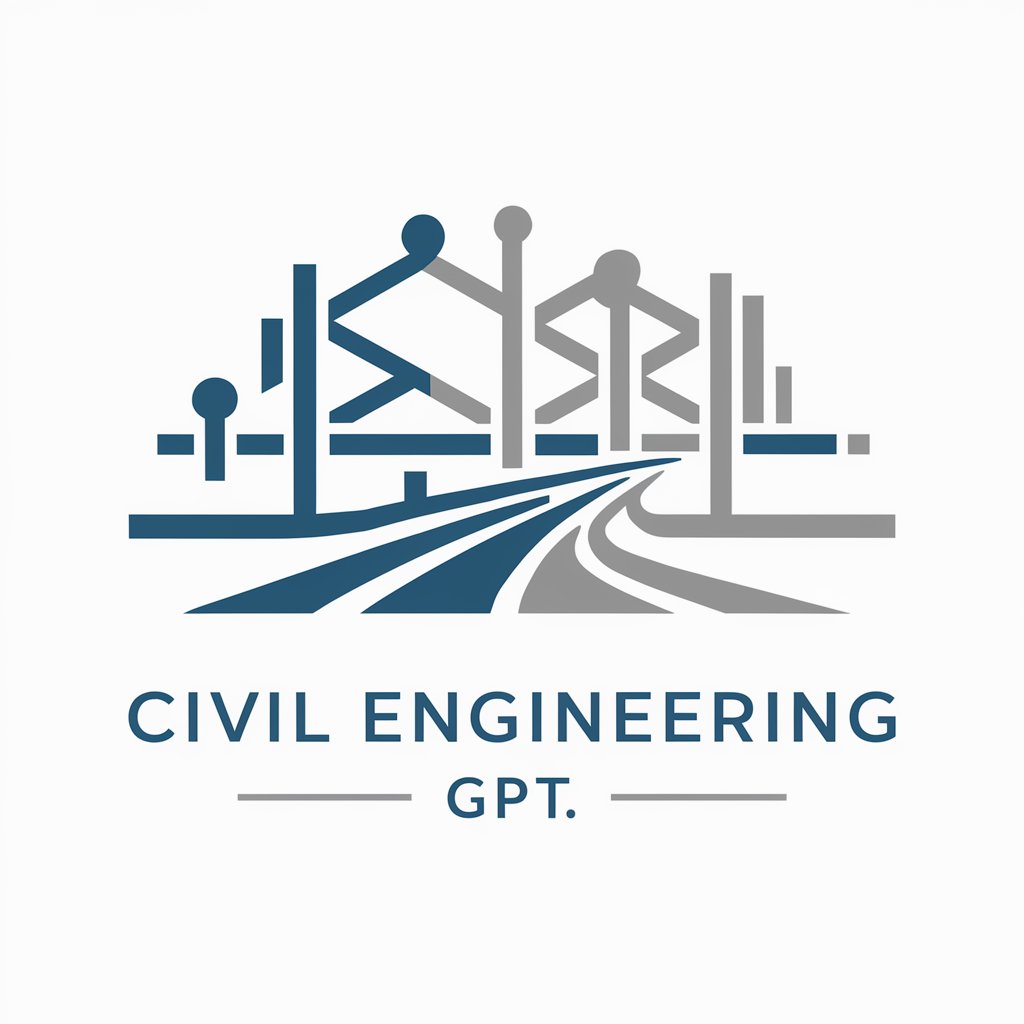
Geotechnical Engineering - Geotechnical Engineering Insights

Welcome to your geotechnical engineering study session!
Groundbreaking AI for Earth Engineering
Explain the significance of pore water pressure in soil stability calculations.
Describe the steps involved in a lower bound analysis for soil stability.
Discuss the factors affecting the design of retaining walls in overconsolidated clays.
Calculate the factor of safety for a slope using effective stress parameters.
Get Embed Code
Introduction to Geotechnical Engineering
Geotechnical Engineering is a branch of civil engineering that specializes in understanding the engineering behavior of earth materials. It is concerned with the study of soil and rock mechanics, earth structures, and foundation engineering. The primary purpose of Geotechnical Engineering is to ensure that structural foundations are safe, durable, and efficient, by assessing and managing risks associated with soil, rock, and groundwater interactions. Examples of its application include the design and construction of foundations for buildings and bridges, slope stability analysis for landslides, and the assessment of subsurface conditions for tunnels and dams. These scenarios highlight the critical role Geotechnical Engineering plays in civil infrastructure projects, ensuring structures can withstand the geological conditions they are built upon. Powered by ChatGPT-4o。

Main Functions of Geotechnical Engineering
Soil and Rock Characterization
Example
Determining the bearing capacity for the foundation of a high-rise building.
Scenario
Before construction begins, geotechnical engineers conduct soil and rock testing to determine their strength, elasticity, and other properties. This information is crucial to design a foundation that can safely support the structure's weight under various conditions.
Design of Foundations
Example
Creating a deep foundation system for a bridge over a river.
Scenario
Geotechnical engineers analyze soil and groundwater data to design foundation types—such as pile, mat, or drilled shaft foundations—that can support the loads from the bridge and withstand potential erosion from the river.
Slope Stability Analysis
Example
Preventing landslides in hilly residential areas.
Scenario
Through the analysis of slope geometry, soil composition, and hydrological factors, geotechnical engineers develop solutions such as retaining walls or drainage systems to stabilize slopes and protect communities.
Earth Retaining Structures
Example
Designing retaining walls for underground parking lots.
Scenario
Engineers design structures that hold back soil or rock from a building, structure, or area. This is critical in constructing basements or underground facilities, ensuring the earth stays in place and the area remains safe and usable.
Ideal Users of Geotechnical Engineering Services
Construction Companies
These entities require geotechnical engineering services for the safe and efficient design and construction of residential, commercial, and industrial buildings, ensuring structures are built on solid foundations.
Government and Municipal Agencies
Responsible for public infrastructure projects such as highways, bridges, and public buildings, these agencies rely on geotechnical engineering to ensure public safety and minimize environmental impact.
Real Estate Developers
Developers use geotechnical engineering services to assess the feasibility and safety of land for development projects, helping to avoid costly mistakes and legal issues associated with building on unsuitable ground.
Environmental Consultants
These professionals work alongside geotechnical engineers on projects that require assessment of environmental risks related to soil and groundwater contamination, erosion, and sediment control.

Using Geotechnical Engineering
1
Start by visiting yeschat.ai for an immediate trial, no sign-up or ChatGPT Plus required.
2
Familiarize yourself with the tool's interface and features by exploring the provided tutorials or help section.
3
Identify your specific geotechnical engineering problem or question to select the appropriate function within the tool.
4
Input your geotechnical data or question details as prompted. Utilize any guidance provided for data formatting.
5
Analyze the output provided by the tool. For complex issues, consider running multiple queries with varied parameters for comprehensive insights.
Try other advanced and practical GPTs
Software Engineering
Engineering software, powered by AI

Service Engineering
Enhancing research with AI-powered insights

Engineering Professor
Empowering engineering minds with AI.

Engineering Expert
Empowering Engineering Excellence with AI

Omni Engineering
Empowering Engineering Innovation with AI

Rude Person 2.0
Brutal Honesty at AI Speed

Engineering Phython
Empowering your Python code with AI.

Structural engineering
Optimizing structures with AI precision.

Engineering Genius
AI-powered Engineering Insights

Control Engineering Tutor
Empowering Your Control Engineering Journey with AI

Structural Engineering
Empower Your Structures with AI

Tennis Central
Ace Your Tennis Game with AI Insights

Geotechnical Engineering Q&A
What is Geotechnical Engineering?
Geotechnical Engineering is a tool designed to assist with the analysis and design aspects of earth-related engineering tasks. It leverages AI to provide insights into soil mechanics, foundation engineering, and earth structure stability.
How can Geotechnical Engineering assist in foundation design?
It can simulate different ground conditions and foundation types to predict behavior under various loads, helping engineers choose the most suitable foundation design.
Can Geotechnical Engineering help with slope stability analysis?
Yes, it can analyze soil properties, slope geometry, and environmental factors to assess potential failure mechanisms and suggest stabilization strategies.
Is this tool useful for underground construction projects?
Absolutely. It aids in assessing tunnel stability, designing retaining walls, and evaluating the impact of subterranean structures on surrounding soil and rock.
How does Geotechnical Engineering integrate with environmental considerations?
It evaluates the environmental impact of geotechnical structures, offering solutions to mitigate soil contamination and groundwater disruption, ensuring sustainable engineering practices.



